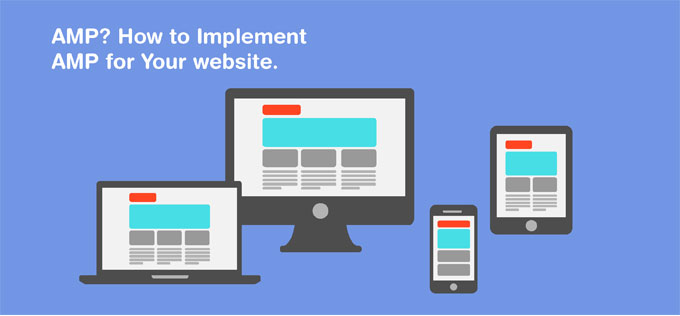AMP? How to Implement AMP for Your website

What Is AMP?
Accelerated Mobile Pages (AMP) is the framework for creating fast-loading mobile web pages to improve user's mobile browser experience. AMP HTML is like your regular HTML, however with a number of rules and restrictions to facilitate honest user expertise.
How does AMP work?
AMP is a framework comprising of three parts.
1. AMP JS
2. AMP HTML
3. AMP Cache
1. AMP JS:
AMP provides you the best JavaScript library which can provide managing resource handling, asynchronous loading and be giving custom tags to be used in AMP HTML. So the pages load as fast as possible.
2. AMP HTML:
AMP HTML is a bunch of custom AMP properties. It comes with some rules and restrictions on allowing reliable performance.
3. AMP Cache:
It's an optional proxy-based content delivery network (CDN). CDN takes your AMP HTML pages, caches them, and automatically optimizes your page performance.
How to Implement AMP for Your website
You will maintain a minimum of 2 versions of any article page: The original version of your article page that users will typically see, and the second one is AMP version of that page.
If you are WordPress users, you need to download and install the WordPress plugin at GitHub, Here is a link - amp-wp GitHub page and click the “Download ZIP” button. You can install an AMP plugin on your WordPress site just as you would any other WordPress plugin.
Once you’re done installing and activating the plugin, append “/amp/” to your pages and if you don’t have a friendly permalink than appending with this “?amp=1”
For example,
Original Blog Post URL: https://domain.com/blog-post
AMP Blog Post URL: https://domain.com/blog-post/amp/
The AMP Discovery page mentions some platforms that would require Schema.org data to create your content eligible to seem within the demo of the Google Search news carousel. Check that you get your schema right.
Pros of Google AMP
- AMP is free and open-source.
- AMP can improve the load times of your website and create a better user experience.
- An opportunity to feature in Google’s AMP carousel.
- At e-commerce sites, AMP has increases conversion rates and a decrease in bounce rates.
Cons of Google AMP
- 3rd party scripts and applications that might not be supported.
- Because Google serves a cached version of AMP pages to users instead of accessing your servers, Google Analytics won’t track visits from users unless you create some configurations to Google Analytics and apply a separate chase code to your AMP pages.
- It does not support Internet Explorer 11.
- It does not support desktop, phone, tablet, and the web view versions of the respective browsers.
I hope you get detailed about implementing AMP on your WordPress website. If you have any questions, feel free to share them by dropping a line below in the comments section.






Comments are closed.